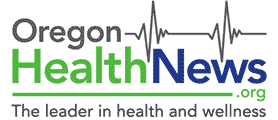Oregon beach-goers could soon see a spike in health advisories warning against water contact.

State officials are proposing more stringent criteria for the level of bacteria that triggers a warning. The new rules would go into effect in 2017 to meet new federal water-safety standards.
The proposed standard could lead to about 50 percent more health advisories, depending on the amount of precipitation, according to Tara Chetock, Oregon Beach Monitoring Program coordinator.
Chetock says bacteria most commonly reach beaches when summer rainfall washes pathogens into creeks and rivers that flow into the ocean.
The Oregon Beach Monitoring Program tracks water quality at 16 Oregon beaches from Memorial Day through Labor Day, the most popular beach-going period.
Six advisories were issued last summer, and 13 in 2014, according to program data.
The newer standards come at a recommendation by the federal Environmental Protection Agency after studies suggested that exposure to the bacteria at the current threshold may still cause gastrointestinal illnesses from accidental ingestion of water during recreational activities, according to the program.
A series of meetings are scheduled for later this month to collect public comment on the potential changes. Public comments also will be taken electronically through April 2016.
Bacteria thresholds are measured under a standard called the Most Probable Number, which is an estimate of the amount of bacteria units in 100 milliliters of water that is run through ultraviolet light.
The current threshold for the voluntary advisories is 158 MPN. The program’s new EPA-based recommendation is 70 MPN.
The Oregon region of the Surfrider Foundation, a nonprofit organization of surfers and other beachgoers who work on ocean-protection and water-quality issues, supports the beach-monitoring program, but Oregon policy manager Charlie Plybon worries the new standard could lead to less beach protection and not more.
More beach advisories issued by the always cash-strapped program would mean more required retesting to see whether bacteria levels abate, Plybon says. That could lead to fewer beaches getting tested while others get regular retesting, he says.
“We don’t believe this is going to be a very big health benefit,” says Plybon, of the Newport area.
Source: Associated Press
